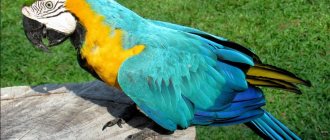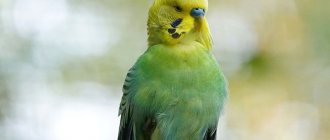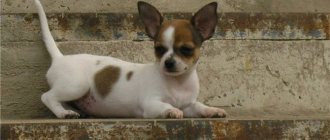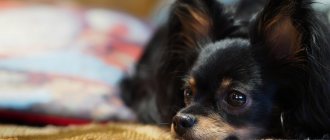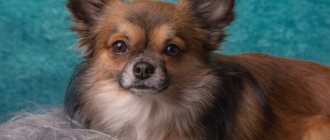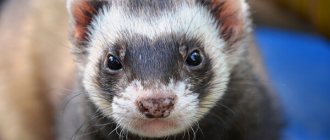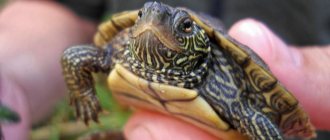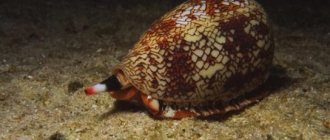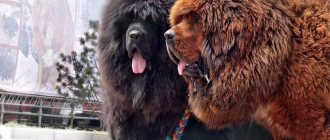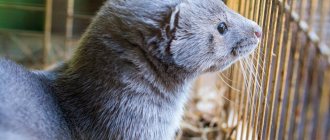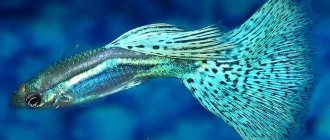The budgerigar is the most popular bird species among people who love to have feathered pets. And for good reason! After all, wavy animals, having those qualities with which they do not leave anyone indifferent, can truly become your new friends.
However, not many people know that the birthplace of budgerigars is Australia. In semi-desert places, in grassy plains, parrots nest in flocks, constantly wandering in search of food. Budgerigars in their natural environment never sit in one place; their days are always quite active. So, at sunrise, the wavy birds go in search of food. They feed mainly on grain crops and various seeds, but they will not refuse fruits and berries. At lunchtime, when the heat peaks, parrots try to find shelter from the sun, most often this happens near water bodies. And when it gets cooler they start searching again.
Budgerigars are not large bird species. Their length does not reach 20 cm, and their weight does not exceed 60 grams. The wing length is 10-12 cm. However, the wavy birds are endowed with a fairly long tail - its length can reach 12 cm.
In their natural environment, the feather color of budgerigars is rich green with black and yellow splashes. This color helps parrots skillfully hide from predators, merging with their environment.
But nowadays there are wavy birds with a different plumage color, for example, yellow.
Description
The natural color of the budgerigar is green with a yellow head, blue tail and a black wave-like pattern on the back, head and wings. Two pigments are responsible for the formation of color: black (eumelanin) and yellow (psittacin). Yellow color, due to the presence of psittacin in feathers, is the main (basic) color. Superimposed on it is blue, which results from the sparse distribution of eumelanin granules in feathers. When these two colors are superimposed on each other, the result is green.
In yellow budgerigars, eumelanin is absent or its amount is reduced to a minimum. Disturbances in the deposition of melanin in feathers can be caused by mutations of various genes. Depending on this, there are 3 types of yellow budgies:
- dark-eyed pure yellow;
- two-factor yellow spangles;
- lutino (ino mutation).
These varieties look almost the same, but have completely different sets of genes.
In dark-eyed pure parrots, the color is due to a combination of two mutations: recessive variegated and pure variegated. Alone, these two mutations cause partial leucism; in combination with each other they give a completely leucistic color. The plumage of dark-eyed pure yellow parrots is light yellow; uniform color throughout the body. The primary flight and tail feathers are paler. The cheek spots (two small spots located on the cheeks on either side of the beak) are white (they are blue in wild parrots). The eyes are dark. Legs intense pink.
The spangle gene is responsible for changing the order of distribution of pigment granules in feather structures and reducing melanin deposition. This mutation is also characterized by the presence of a recessive modifier, which is a lightening factor. When two Spangles are crossed, the offspring produces chicks that carry the Spangle gene from both parents—two-factor Spangles. They have less melanin in their feathers than single-factor feathers (i.e. those obtained from crossing a Spangle and a non-Spangle). This is due to the fact that the spangle gene has incomplete dominance over the corresponding standard gene. Therefore, in one-factor spangles the dark pattern is partially retained and a blue or green color is present, while in two-factor spangles the color becomes monochromatic, without a pattern or color inclusions. The plumage of two-factor yellow spangles is pure yellow; the primary flight and tail feathers are slightly lighter. The spots on the cheeks are white with a silvery tint. The pupils are black, the iris is white. The legs are bluish-gray, deep pink, or a shade somewhere between these two colors.
The ino gene causes the production of eumelanin to cease. In addition, this gene masks all other mutations (except cinnamon). Therefore, birds with the ino mutation lack the black pattern, blue and green spots, and the pupils are red. The lutino parrot is an intense, uniform yellow color. The primary flight and tail feathers are white or yellowish-white. The cheek markings are white. The pupils are red, the iris is white. Paws are pink. The ino gene is sex-linked and is located on the X chromosome. Since birds have a set of sex chromosomes in females - XY, and in males - XX, outwardly the ino mutation appears more often in females, and males can be carriers and do not differ in appearance from normal parrots. Lutino males can only be produced by crossing two parents carrying the ino gene.
Breeding and selection
Exotic birds living in Australia became known back in 1805. One English traveler noticed handsome parrots on the branches of tropical trees on the mainland, described them and included them in his reviews.
Since then, taking birds outside their usual habitat has been an impossible mission - often the birds were driven to death either by transportation, or by the conditions of another land, or the climate of an unknown area. Only rich people who were willing to pay a lot of money to create comfortable conditions for the bird’s existence were able to keep their feathered pets alive.
Later, people still managed to adapt to observing the rules for keeping lutino parrots. Modern poultry houses successfully keep them as pets in apartments and houses. Today's parrots have become so used to it that they can't handle living conditions indoors. Moreover, they do not require special heating or lighting. They have become absolutely unpretentious.
Some bird lovers even breed lutino. With the right approach, you can get good money for chicks.
To start breeding parrots, you need to consider:
- There must be a male and a female in the cage. It is quite easy to guess the sex of birds; DNA analysis will help you determine this parameter most accurately. It is carried out in veterinary clinics.
- Not all birds are capable of reproduction and not all desire it. We need strong and resilient individuals who show sympathy for each other. Parrots are surprisingly faithful birds, which is why sympathy is the main parameter of a “happy married couple.”
- There should be some periodicity between bird breedings. Too frequent matings can “disable” a couple.
For breeding, you also need to know the rules for caring for chicks. Parrot chicks require special care, because nature dictates that they are raised in hot climates.
It is important to consider that selective breeding does not promise much success. The reason for this is the usual rules of genetics. Birds become more and more immune-weak with each generation, and the likelihood of death is high. From time to time it is necessary to change males/females with individuals obtained from a “different genus” of birds.
Determination of gender
Determining the sex of yellow budgies can be difficult. This is due to the fact that the melanin content in birds of this color is reduced not only in the feathers, but also in the cere, as a result of which the cere of males and females can have almost the same color. To reliably determine the sex of young birds, a laboratory DNA analysis is performed. In birds older than two years of age, the shades of the cere of males and females begin to differ.
Thus, in dark-eyed pure yellow parrots, as well as representatives of the lutino morph, the cere of males has a pure pink tint, and that of females is brownish. Male two-factor yellow spangles have a blue cere, while females have a brown cere.
Key points about keeping parrots at home
Corellas do not require special living conditions. The basic rules for living such a parrot are good and proper care and feeding.
Find out what colors cockatiels come in, how to choose a cockatiel, how to care for it and its chicks at home.
Cell
The cage requirements are:
- Birds of this species do not like cramped conditions, so the place for their housing should be spacious.
- The cage must be vertical with minimum dimensions for one bird of at least 60x50x50 cm, and for a pair - 150x70x70 cm.
- It is better to opt for a cage made of steel without varnish or paint. The distance between the rods should be less than 2 cm.
- It is recommended to choose a place for the cage away from drafts and cool air, since this is a heat-loving bird. Corellas do not like changes in air, and the optimal temperature for keeping them is +22…+24 °C. When turning on the heaters in winter, it is necessary to additionally humidify the air.
- Cleaning the cage should be done regularly: changing the tray filler, washing the drinking bowl, feeder, and toys every week.
Accessories
Cockatiels are active and love to frolic, so it’s worth decorating their home with accessories such as:
- 2-3 feeders if there are several birds. The diameter of the feeder should be 6–7 cm, which will allow the bird to feed freely and comfortably;
- the drinker should also have a large hole diameter, which will provide free access to water and make it possible to wash it efficiently;
- toys: ladders, perches, swings, mirror, rings, ropes.
In a spacious cage you can place at least 2-3 perches, for which you can use twigs with bark with a diameter of 2-2.5 cm. It is better to use branches of fruit trees.
Find out if it is possible to make drinking bowls, feeders, and toys for parrots.
It would not be a bad idea to provide the lutino with the opportunity to swim by placing a special bath of water or a deep container with a small amount of liquid in the cage. The bird can be sprayed with a spray bottle or even bathed in the shower.
Corellas are very playful, so they will not refuse toys, swings, and bells. However, you should consider their placement in the cage so that they do not interfere with the bird’s flight.
Feed and water
The cockatiel's diet should be varied, although the birds are not picky or demanding when it comes to food.
First of all, these should be:
- grain mash , which should include millet, sunflower seeds, oats, wheat, canary seed, corn, flaxseed, crushed nuts;
- herbal supplements: chicory, dandelion leaves, twigs that will help cleanse the beak;
- vegetables: carrots, cauliflower, broccoli, Brussels sprouts, beets and cucumber;
- fruits: apple, pear, apricot, peach, plum, cherry, quince, bananas, melon, pineapple, kiwi, mango, oranges.
Corella birds can be fed with special balanced feed mixtures, which are sold at any pet store.
Important! The water in the drinking bowl should always be fresh - the key to the health and activity of the cockatiel.
The following should not be given to cockatiels as food:
- candied fruits and vegetables;
- dairy and fermented milk products;
- roast;
- salty;
- parsley;
- dill;
- cilantro;
- mint.
Pale yellow variety
The yellowface gene is responsible for the yellowish color of the head of wild budgerigars. If the plumage on a bird's body lacks the yellow pigment psittacin, it turns blue. If the black pigment eumelanin is also absent, the bird acquires a pure white color. This morph is called "albino". When the yellowface gene is present, an albino parrot's plumage becomes pale yellow. These yellow parrots are called “yellow-faced albino.”
The plumage of yellow-faced albino is unevenly colored. The most intense color is observed on the head (mask area). The rest of the body is painted paler. The coloring is often uneven: light and even whitish feathers alternate with brighter ones in a chaotic manner.
Habitat
There is a yellow parrot in Australia. The mainland is quite wooded, which is why parrots are usually green in color. This helps them camouflage themselves from predators.
However, for the same camouflage purposes, their color is not uniform. There are splashes of white, yellow, and blue. There is also a black color on the feathers of birds, which helps them blend in with the branches.
Thus, the colors help small nimble birds to successfully exist in the conditions of Australian forests and jungles.
In the morning and late evening, lutinos look for food. Towards the zenith of the Sun, they gather in large flocks and sit on the crowns of tropical trees. This is how all their hot days pass in their native land. The owner of a tropical bird does not have to adjust its care regimen to the natural habit of the bird.
Parrots feel no less good in cozy cages with a sea of toys, tasty food, fresh water and a caring owner nearby.
Exercises for lutino
The lutino parrot is not a bird that will be content to remain in its cage all day. They love to interact with their owners and climb mountains, and will benefit from daily opportunities to fly for optimal health.
Pros of owning Lutino
- Friendly once you gain their trust
- Active
- Social
- I can speak
What to name a yellow parrot
Male cockatiels can be called talkers. These birds love to imitate and imitate the sounds that they often hear around them.
If you want to teach your feathered pet to say its name, you should pay attention that the name of the parrot must contain:
- hissing - w, w, shch;
- deaf - k, f;
- calls - d, g, r;
- vowels - a, i, e, u.
Learn how to tame a cockatiel and how to teach it to talk.
The name should be easily divided into syllables to make it easier to remember and speak. However, you should not choose nicknames that are too long, consisting of many syllables.
This set of letters is easily perceived by cockatiels, and birds have no difficulty in reproducing it. Universal nicknames for cockatiels include: Arnie, Basie, Dezzy, Kiki, Ricky, Roni, Chuchi.
girl
Female cockatiels lutino are most often called by the following nicknames:
- Asya, Assol, Ava, Aisha, Argo, Arina, Arisha, Asha;
- Bassy, Belka, Bertha, Betsy, Bibi, Bisha, Blanche, Britney, Byasha;
- Varya, Venus, Verka, Freckles, Vicky, Virra, Vlada;
- Gamma, Galya, Glasha, Gyurza, Gressi;
- Dana, Jela, Julie, Dinara, Disa, Dera;
- Eva, Yolka, Yoshka;
Learn how to make a cockatiel cage.
- Jojo, Jolly, Zhulka, Zhumka, Zhurra;
- Zara, Zena, Zina, Zlata, Zora;
- Ida, Inga, Irma, Irene, Ircha;
- Karella, Kasia, Katya, Kiwi, Kira, Kreida;
- Larra, Libby, Lima, Lyra, Luna, Lusha, Lushka;
- Mackey, Manya, Marisha, Masha, Mirra, Michelle, Maggie;
- Nami, Nellie, Niko, Mink, Nyusha, Nyama;
- Oda, Okki, Onika, Oriva, Ophelia;
- Panny, Peggy, Pitta, Perry, Pusya;
- Rada, Raya, Rozzi, Ruta, Rady;
- Saga, Sarah, Cindy, Sonya;
- Tanya, Thames, Tumka, Tyushka;
- Unka, Ulya, Urma, Ursula, Ustya;
- Fanka, Fairy, Frezi, Frosya, Fury;
- Hanni, Hasya, Hirra, Chloe, Juana, Hella;
- Tsatsa, Tsea, Zinnia, Tsypa;
- Chana, Chacha, Chilita, Chunya;
- Shani, Shella, Sherry, Shusha;
- Ellie, Elsa, Emma, Erica, Estha;
- Yucca, Yurga, Yusya, Yutana, Yusha;
- Yaba, Yazi, Yanka, Yashi, Jasper.
Did you know? In Australia, special schools have been created for chirps. They teach parrots to talk.
Genetics
If we talk about how budgies live in nature, then their coloring serves as camouflage: the grass-green color of the feathers allows them to hide in the foliage. The facial mask and goiter are colored yellow. A black pattern in the form of waves runs from the top of the head along the back. There are black or dark purple spots on the cheeks - distinctive marks characteristic of all budgerigars. The feathers on the wings and tail are much darker than on the belly.
Attention! Genetic abnormalities occur when a pair of birds hatches a chick with a non-standard coloring. Most often, such birds are doomed to death, since their relatives show aggression towards them and beat them to death.
Additional photos
The photographs show, in descending order, the following varieties of budgies: another crested, harlequin (the color is differentiated on the chest and tummy), lutinous (it has yellow feathers without a pattern), fallow (distinguished by the red color of the eyes), brown-winged (theirs are not so bright plumage color, like cinnamon), mottled, anthracite, slate, sky blue misty (from English “fuzzy”, “unclear”), celandine, curly, lace wing (have “lace wings”), black-faced, gray, black, yellow-faced blue spangle, turquoise and light blue budgie girl.
He or she
Male
The boy is a very active pet
He will make noise, shout, in general, attract attention to himself in all the ways known to him. At the same time, the boy is very talented
He can imitate almost any sound, so he will delight you with interesting trills, songs and sounds all day long.
If you buy only one boy, you can quickly teach him human speech (in the case of regular lessons). However, a lonely male becomes very attached to his owner and gets very bored in his absence. It's best to find a pair for him. And it doesn’t have to be a girl, it can also be a boy – males get along well.
Female
The female budgerigar will be calm and relatively quiet. A girl does not achieve the same ability in imitation as a boy, so her songs are rare and short.
The girl would rather restore order than start screaming loudly and for a long time. If you decide to have a mate for a female, it is better to choose a boy. The female can start quarrels with a same-sex bird.
Rules for sharing
In order for the acquaintance of parrots to pass without any incidents, you need to follow some rules. Remember that a female is being placed with a male. Otherwise, the female will attack the new resident, defending her territory. If they are looking for a couple for a girl, then it is better to purchase a new, spacious cage, where the boy should be placed first.
To avoid unnecessary quarrels or fights between parrots, the cage must be prepared in advance - hang additional perches, another drinking bowl, bathing bowl, and feeder.
Don't forget about quarantine - a new pet must be kept separately for forty days to identify possible hidden diseases. During this period, you can “make friends” with a new parrot. When he is in a couple, it is more difficult to do this.
